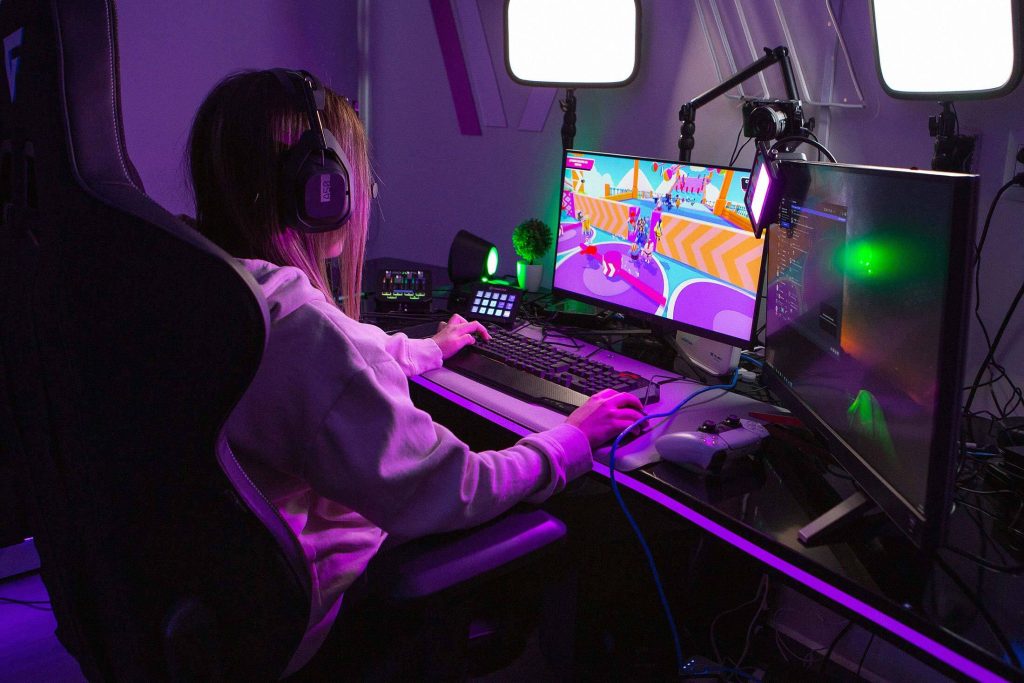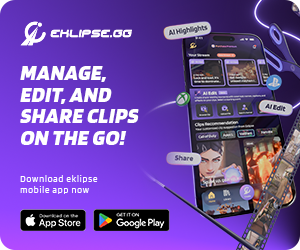
Level Up Your Marvel Rivals Gameplay
Capture your epic wins, clutch moments, and even hilarious fails with Eklipse. Easily create and share highlight reels with your friends—even if you're not streaming!
Learn MoreHave you ever struggled to follow a live stream due to poor captions or the absence of audio descriptions? This issue is more common than you might think and affects many viewers. It highlights the importance of stream accessibility, ensuring that all audiences, regardless of their abilities, can enjoy the content.
Fortunately, there are tools that can help make your broadcasts more inclusive. This guide will introduce five essential resources to enhance the accessibility of your streams, ensuring that everyone can engage with your content fully.

Why Stream Accessibility Matters

Accessibility in live streaming isn’t just a nice-to-have; it’s an essential aspect of inclusive content creation. Globally, over a billion people experience significant disabilities, and in the US alone, 27% of adults have a disability.
This isn’t a small niche; it’s a large audience that can benefit from inclusive content. When I started streaming, I didn’t realize how many people were potentially being excluded. This knowledge pushed me to learn more about how to improve my live streams.
Making your content accessible is also the right thing to do. Moreover, it also makes good business sense. Companies with inaccessible websites lose billions annually to competitors, and those prioritizing web accessibility are more likely to outperform their rivals. Plus, accessible content enhances engagement and retention.
In my experience, when my streams become more accessible, my audience has grown more diverse and the sense of community is stronger. In short, accessibility is a win-win for everyone involved.
So, are you ready to start making a difference? Let’s explore five essential tools that can dramatically enhance your stream’s accessibility.
1. WebCaptioner.com: Free Real-Time Captions
When I first looked into captioning, WebCaptioner.com was a game changer. It’s a free, web-based tool that works seamlessly with Google Chrome and integrates smoothly with OBS Studio, a popular streaming software. As a streamer, I found it incredibly easy to set up. You simply open WebCaptioner in your browser, enable captions, and it’s ready to go, making your speech appear as text on your stream.
Details:
- Free to use
- Easy integration with OBS Studio
- Real-time captioning
- Customizable caption appearance
Strength and weakness:
- Strength: Easy to set up and use, doesn’t cost anything, and great for live events.
- Weakness: Accuracy may depend on audio clarity and internet connection, it is not as advanced as paid services.
2. EEG Falcon Live Streaming Encoder and Lexi Automatic Captioning Service: Professional Quality
When I needed a step up in captioning quality, I explored professional-grade options like the EEG Falcon Live Streaming Encoder and Lexi Automatic Captioning Service. These tools are designed for high accuracy and reliability, ideal for those seeking professional-level results.
This combination offers a more robust solution for live captioning, ensuring the text is accurate and appears without delays, so you can focus on your stream content. I also noticed a significant improvement in readability and minimal errors during my testing phase.
Details:
- High accuracy
- Low latency captioning
- Professional integration
- Real-time closed captioning
Strength and weakness:
- Strength: Professional-grade captioning and high accuracy.
- Weakness: Can be expensive and may require additional setup.
3. AccessLoop: Professional Live Captioning and Sign Language
For a comprehensive accessibility solution, I found AccessLoop to be incredibly impressive. It’s not just about live captions; it also offers sign language interpretation. This tool is designed for those who need a professional-grade approach to accessibility.
While I haven’t personally used the sign language feature yet, it is on my list to implement into my streams. I’ve found their captioning features are worth the extra expense for my needs.
Details:
- Live captions and sign language interpretation
- Professional-grade
- Customizable appearance
- Seamless integration with streaming platforms
Strength and weakness:
- Strength: Offers comprehensive accessibility features.
- Weakness: It is a paid service and might be overkill for some smaller streamers.
4. Built-in Platform Features: YouTube, Twitch, Facebook, Instagram
As I explored accessibility options, I realized many popular streaming platforms have built-in accessibility tools. YouTube, Twitch, Facebook, and Instagram all offer automatic captioning. This makes it easier than ever to make your content more accessible.
When I started using these tools, I saw an immediate impact. The ease of use makes this a perfect starting point for any new streamer. These features can be easily found in each platform’s settings.
Details:
- Automatic captioning
- Accessibility settings
- Simple to enable
- Available in various languages
Strength and weakness:
- Strength: Easy to use and free.
- Weakness: Accuracy can vary, and it might not always be available for every language.
5. StreamYard: Beginner-Friendly Platform with Accessibility
When I was first starting out, I discovered that StreamYard is a great option because it’s very beginner-friendly and works well with other accessibility tools, like AccessLoop. This means you can combine its ease of use with more professional captioning and accessibility options.
I’ve had multiple beginners rave to me about how easy StreamYard is. It’s great to know they can start their journey with accessibility in mind.
Details:
- Easy to use
- Supports integrations with accessibility tools
- Multi-streaming capabilities
- Professional broadcasting features
Strength and weakness:
- Strength: User-friendly, with great support for accessibility add-ons.
- Weakness: It might not be as robust as some other professional-level streaming tools.
Key Considerations for Accessible Streams
Besides choosing the right tools, there are a few other things I’ve learned that contribute to accessible live streams. Good audio quality is essential. Clear speech and minimal background noise are vital for viewers who rely on audio. Also, make sure to use high-contrast visuals and simple language. Clear, good lighting is also important for all viewers.
Community engagement is essential. For example, those watching can also provide real-time descriptions for visually impaired viewers. This collective effort can make a huge difference. It’s important to also remember that making content accessible isn’t just good practice, but it’s often a legal requirement.
It’s not only ethical to do this; it also expands the reach and profitability of your content. The Web Accessibility Directive mandates certain accessibility standards, and it’s important to be aware of these regulations.
Final Thoughts
Improving stream accessibility may seem challenging, but it’s a vital step that’s easier than it appears. The five tools highlighted here, WebCaptioner.com, EEG Falcon/Lexi, AccessLoop, platform built-in features, and StreamYard—cater to various needs and budgets, providing flexible solutions for streamers.
Prioritizing accessibility not only fosters inclusivity but also enhances the overall quality of your content. For newcomers, I recommend starting with StreamYard or built-in platform options due to their simplicity. For more experienced streamers, EEG Falcon/Lexi and AccessLoop offer a higher level of polish and functionality.
🎮 Play. Clip. Share.
You don’t need to be a streamer to create amazing gaming clips.
Let Eklipse AI auto-detect your best moments and turn them into epic highlights!
Limited free clips available. Don't miss out!
